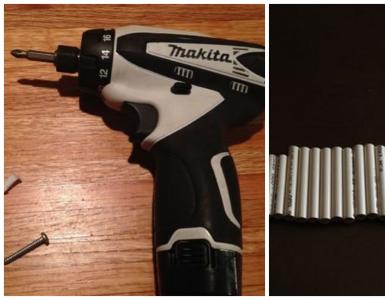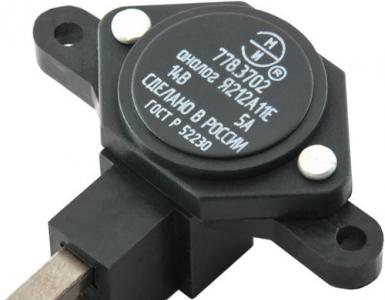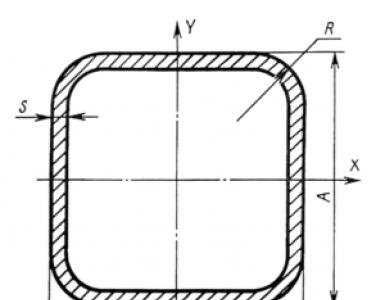Drilling of wells for technical water. Cost of wells for water. On what does the price depend? Which wells are suitable for indoor facilities
Having your own home for permanent residence forces you to decide on the issue of water supply. Now it is quite simple - it is enough to organize drilling of wells for water. You can also do it on your own, or you can attract professionals. To understand the degree of financial and labor costs, it is necessary to understand the technology of the process of drilling wells for water.
In addition, it is very pleasant to look at a garden fountain made of stone, natural stone or granite. In combination with small lighting, the pump can be placed in the garden fountain effectively. In addition, the well can be used as a first step for automatic irrigation of the garden.
Garden fountains - the cost of building wells?
We find that all this sounds very cool, and so we thought that there were no problems, we are looking for a simple guide to creating wells. However, it soon became clear to us that this should be left to professionals. For this reason, we simply turned to an experienced well builder in the Neuenhagen suburbs near Berlin and made a complete proposal for us.
Features of the process of drilling water wells
Depending on the type of technology, the process of drilling wells for water can be very different, but necessarily includes the destruction of the rock and the realization of its rise to the surface. There are types of drilling with a constant supply of water or a clay solution, and also without the use of liquids.
Now the costs for our garden fountain look like this. These costs, of course, are not cheap - especially since you have little money left in the new building. First of all, the fact that the groundwater table is so low makes well construction very expensive. Not only the cost of drilling, but also the necessary pump. This is a special submersible pump that allows you to pump water at half the pressure from a depth of 25 meters.
And in the garden we would not have a good fountain with this offer, but just a small water tap from the ground. The garden-fountain could certainly be built around it, but such a truly romantic garden fountain of stone will probably never be.
Also, it is necessary to distinguish drilling of artesian wells and sand. Many believe that the main difference between these wells is only in depth. But this is not so. The water intake comes from different aquifers. The quality and volume of water in these layers has a fundamental difference.
The well for "sand" is characterized by a lower production rate and unstable chemical composition. Drilling on "limestone" is guaranteed to give a large volume and high quality of water.
At the moment, we will postpone the construction of the well. We do not want to pay additional costs for the new building. Moreover, it would be necessary to find out how many years and the consumption of water will be well calculated. So we also get the benefit of cheap water, because here. Well: economical irrigation assistance.
Another record year, as in the previous year, and the bill for water returned to unimaginable heights. Owners of the garden, in particular, know how to sing a song. But there is a way to irrigate the garden, not allowing deplorable accounts: a well in your own garden. The cost of building a well depends largely on the height of the groundwater table. "With an average garden for a home, investments are only if they are at least six meters from the surface," the expert said. However, in the case of very large estates, a deeper well may make sense.
For any type of drilling, the following stages occur:
- Destruction of the ground.
- Raise it to the surface.
- Installation of casing pipes.
- Borehole.
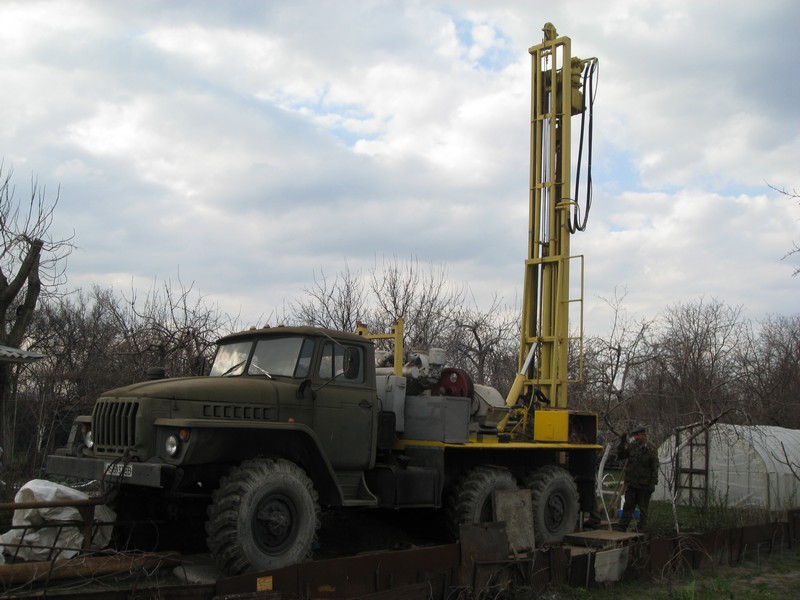 Another desirable item is the installation of a caisson head to prevent the entry of surface water into the well. Installation of casing pipes is mandatory to prevent the collapse of the well and the penetration of the upper groundwater into it.
Another desirable item is the installation of a caisson head to prevent the entry of surface water into the well. Installation of casing pipes is mandatory to prevent the collapse of the well and the penetration of the upper groundwater into it.
The level of groundwater can be obtained from a water authority, a water supplier or a local well builder. The texture of the soil affects the costs. The nature of the soil also affects costs and, consequently, costs: "Sandy, aquiferous soils are ideal," explains Borcher. A layer of clay or clay, on the other hand, does not produce water, so the well must be lowered. It takes a lot of effort for the rock layers to be drilled.
For the garden fountain different building principles are possible. On the other hand, drilling, pushing and flushing of wells are common. They differ in their quality and service life, as well as in investment costs. Drilling from six to ten meters.
The pumping of an artesian well is carried out once it has been completed once. Wells on the first aquifer should be pumped after a long period of non-use.
Machine drilling rigs for drilling wells for water require sufficient free space on the site and the possibility of travel to it. For drilling, hydro-pump devices, small drilling rigs and manual methods can be used.
The drilled well has a long life, "says the well builder. The drill pipe is drained through the aquifer of groundwater to the ground drain, and then pulled again. In the underground waters there is a perforated or slotted filter tube, which is surrounded by a gravel filter. This is followed by a fully wound tube on the surface of the ground through which water is fed. The borehole for private purposes averages from six to ten meters in depth and has a diameter of 30 centimeters.
Spotted and washed wells are specific well forms, but they require pilot holes when the floor structure is unknown. Dense or rinsed wells cost from about a quarter to a fifth of the borehole at about 300 euros, but they do not have a filter gradient for storage, and therefore they are less suitable for all soils that do not give water well, "says Borcher.
Independent manual drilling of wells
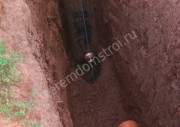 If necessary, it is possible to drill water wells with your own hands. For these purposes, you can use a conventional drill. The simplest way is rotary - a simple rotation of the drill. At the very beginning of the process, one person can cope with the work, but as the drill dives, it becomes impossible.
If necessary, it is possible to drill water wells with your own hands. For these purposes, you can use a conventional drill. The simplest way is rotary - a simple rotation of the drill. At the very beginning of the process, one person can cope with the work, but as the drill dives, it becomes impossible.
There are also various options for choosing a pump: a self-priming centrifugal pump can be connected up to a maximum depth of 8 to 9 meters. Such devices cost from 200 to 300 euros. An important buying criterion can be the noise level: "Monotonous noise of the electric motor can already drown gas sprinkler", warns Borcher.
Quiet, but also more expensive alternative - submersible pressure pumps, which constantly remain under water. In the case of deep wells, they are irreplaceable. In the above-ground zone, the well can be designed to taste: "Simulation of the wellbore is, of course, conceivable," says Borcher. "You can also make the fountain invisible, allowing the pump to disappear in a room under the ground."
If there is a jamming of the drill it is enough to turn it in the opposite direction. One way to facilitate rotation is to add ordinary water to the well. As the drill is immersed, it is increased by an additional knee, periodically removing it to remove soil from the well.
Manual drilling of water wells with water by means of a drill is not the only way. Another common method is shock-rope. When using this method, a tripod, a driving glass and a rope are used. A common piece of metal pipe with a sharpened edge can act as a driving glass. From the height of the tower, a glass is lowered into the deepening made by the drill and, with the help of a rope or rope, gets to remove the soil from it. In this case, the water added to the well also facilitates the excavation process.
The cost of drilling a well depends mainly on the depth of the well. At a depth of up to ten meters, drilling is often a cheaper alternative. For large depths, it is necessary to use a specialized company that calculates drilling in accordance with operating counters.
The main costs of drilling and pump
The bulk of the cost of drilling a well is due to the drilling process by entering the pipeline and the pump. In most cases, about half of the total cost is half of these two factors. The speed of work increases with increasing number. In proportion, the purchase price increases for the necessary pump, which should bring more energy with increasing depth. The remaining about twenty percent are allocated for material and incidental expenses for construction and creation of a workplace.
Drilling of wells by manual methods is possible only up to the first aquifer and requires a lot of time and physical strength. Independent drilling is performed only in the warm season. For drilling in winter it is better to contact specialists.
Drilling wells in winter
![]() When building or settling in a finished house in winter, it may be necessary to urgently organize water supply.
When building or settling in a finished house in winter, it may be necessary to urgently organize water supply.
Regardless of whether it is drilled or not, it is determined by the depth of the groundwater level, the soil condition and the availability of the drilling site. Frequently paid contractual firms charge extra fees if a complex approach and construction site equipment is required. Important to final destination is the written entry of all agreed points that need to correct some variables. This includes monitoring in case of incorrect drilling, for example, if a large stone requires a new approach to drilling.
Preliminary stresses for drilling and plows
Most providers do not charge an additional fee, but the number of attempts should also be corrected. To drill a well, including the installation of pipelines, and many wells offer wells for drilling up to ten meters. They range from 600 to 800 euros, as well as minimum prices for lower drilling distances.
Drilling of water wells in winter is quite common and has a number of advantages. These include:
- reduced prices due to fewer orders from drilling companies;
- reduction of soil damage on the site;
- no need to recycle clay;
- transportation of trucks in closed for traffic in summer settlements;
- the possibility of smooth drilling in places with a high level of groundwater.
Therefore, winter drilling becomes more popular with owners of private houses. A lot of pluses are shaded only by one minus - discomfort work for drillers. The opportunity to provide them with hot tea or a place for heating leaves only positive aspects in winter drilling.
For deeper drilling, prices are calculated per follower from 50 to 100 euros, and there is usually a limit on the depth from 15 to 20 euros. From this depth of drilling, the most important are from 100 to 150 euros. All costs include the main pipe, including the filter unit.
The very drilling of a well saves up to sixty percent of the cost, but is limited to a depth of about ten meters. Material, wells and sealants are only a small part of the costs and can be estimated in the range of 20 to 30 euros per meter of stroke depth. The biggest element, except the pump, is that.
The cost of a well and full autonomous water supply
The presence of a well in the yard as the wells appear is no longer relevant. The emergence of wells with automated water supply practically displaced wells from new houses. This kind of water supply is the most modern and durable. The life of the well is much less, with the worst quality of water.
# Is it well protected?
This situation generates a significant loss of money when they can not get water on their farm. Protected areas are defined in the Hydrological Plan of each basin and limit the use of local water resources. For example, in the areas of the Guadalquivir Supply Perimeter, a well may be legalized for use, i.e. Give water to your farmhouse or a cottage that is legalized. Therefore, the use of irrigation will be completely ruled out.
# What is the conservation status of the underground mass?
This means that in these areas you can not legalize the well, except for using a legalized construction proposal and in the absence of a technical and economic opportunity. In the Guadalquivir there is an exception to this rule that permits the use of irrigation in these areas only if the volume of water is less than 3 million liters per year. In this case, before confirming the use of water, the Confederation will observe the specific state of the watershed catchment area.
In general, the procedure for water supply from the well consists of 3 parts:
- Drilling.
- Well construction.
- Installing a water treatment system.
The cost of drilling wells for turnkey water depends on several parameters. These are the features of the ground, the professionalism of the workers, and the depth of the well. Special attention should be paid to the level of specialists. If enough for any kind of handyman with a shovel to equip the well, the well needs experience and knowledge. Their availability depends on the life of the well, the quality of pumping and the speed of work.
# What is the distance between the surface water body and the well?
When the well is located less than 100 meters from any open surface water body, it is considered to be in the police zone of the Caucasus. This situation will make it difficult to clean the well.
# What is the permeability of the soil, where the well is located
Permeability is a key factor in the legalization of wells in the police zones of the shoreline. If the permeability is high, the legalization of the well will be very difficult.# How far is the neighbor from a well well treated?
The legalization of the well will be conditioned by the distance to the legalized well of the neighbor. If your well is less than the minimum distance of a neighbor, your well can not be legalized.
# How much water do you need, and on what surface will you use water
The hydrological plan establishes donations for each type of crop per hectare and year. More of this envelope can not be used.Basically, when drilling wells on water, the price per meter is indicated. This is due to the different depth of the aquifer in different terrains and features. Drilling wells in the Moscow region in different areas is carried out with differences in prices per meter. That is why the specialists of our company conduct preliminary calculations regarding the location of the site. The cost of drilling wells for water, depending on the location of the site by area is shown in the table.
For example, in the Guadalquivir and for olive groves, the donation is 500 m³ per hectare per year. If we are going to legalize a well for less than 7 million liters, we will not be able to irrigate more than 4, 5 hectares so as not to exceed the limit of donation. If you need more water, you will need to apply for a concession for water.
In short, before investing in a well, it is important to know whether such a capture can get all the necessary permits. The fulfillment of the above requirements ensures an easy legalization of the well. On the contrary, the violation of some of them may make it difficult or even prevent the legalization of the well.
| Drilling wells from 1900 rubles / m |
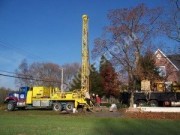 |
| Well construction from 80000 rub |
 |
| Installation of water treatment systems from 130 000 rub In about one sixth of American households, drinking water comes from private wells. They can be contaminated with chemicals or pathogens and cause disease. With a few exceptions, their owners are responsible for them. Children can also drink water well in kindergarten or while traveling. Diseases of these children as a result of contaminated water can be serious. This consensus report contains recommendations on testing, testing and repair of wells that provide drinking water for children. |
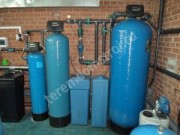 |
Ordering drilling in our company, you get a good job in a short time. Works are carried out by experienced specialists on the basis of project documentation.
In our company, the project, the development of a well and the installation of a water treatment system can be ordered simultaneously with drilling. We also install water treatment systems on already prepared wells, if they contain not desirable impurities.
Drilling of wells for water in the Leningrad region is also desirable to be done by specialists due to the different occurrence of aquifers. Experienced employees of our company know the approximate level of occurrence of the aquifer by regions. We are drilling on water in Moscow and Leningrad and Moscow regions.
The prices for drilling artesian wells for water depend on the professionalism of the performers and the features of the ground. The service life and the completion of the well depend on the life of the well and the partial purity of the water produced. For drinking needs it is better to resort to the help of specialists able to perform really good drilling of water wells and their arrangement.
An often asked question to our company is Istok MSK - "What kind of well for a house to drill on the site?"
To ensure a clean, useful water, and even in the necessary quantity in the house, it is necessary to take into account a number of factors that affect the quality and quantity of water supplied by the wells. For a long time already everyone knows that eating well water every year becomes more dangerous, this is affected by a number of environmental causes created by humanity itself, in the places where they live. Often, septic tanks are installed near the wells, which has a very negative effect on groundwaters entering the upper aquifers.
Artesian and sand Are the two main types of water-bearing wells, the water quality of which can satisfy the consumer, and the amount of produced water can vary from 0.2 to 4 m3 / cu. According to the experts of our company, the water-bearing wells on the sand are less productive, and the water quality in them is worse than in the artesian ones. This is related to the different depths of their aquifers, practically related to the type of water produced. In sandy ground, water is harder to obtain because of a number of features that have a type of screening of water from sand by means of a filter from a mesh braid net at the bottom of the well. Whereas in artesian limestone, water has a free position and does not need to be filtered, and its debit allows to pump up to 70 m3 / cu. per hour, depending on the diameter of the well and the productivity of the aquifer, and the power of the downhole pump, of course.

Also, most microorganisms live in water from sand wells, since this water has more acceptable conditions for their life, whereas in artesian it has a very low temperature and limited access from the outside environment (wastewater in known do not penetrate!)
From all of the above, it makes sense to conclude that if you need clean water, in large quantities, it is better to drill a well for limestone (artesian), and if water is used in small quantities and only for technical purposes, you can limit the sand, it all depends from needs and tasks.
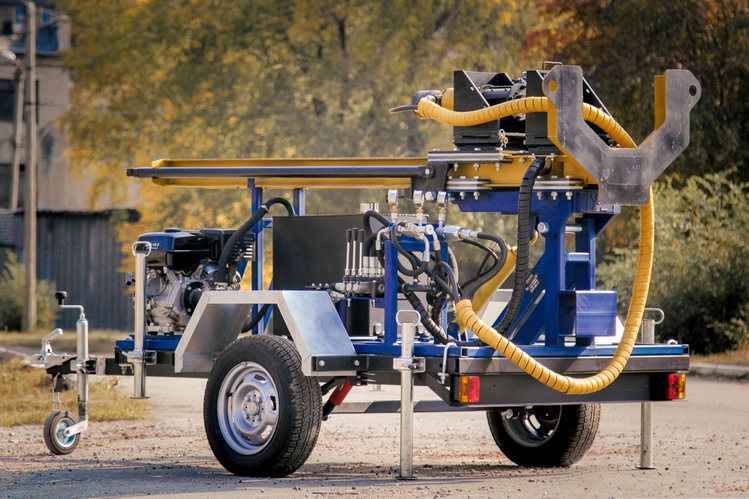 There is no fundamental difference when and where to drill to the water, there are only a number of conditions under which drilling is impossible, because everything else is solved with the help of a technological approach to modern drilling of wells. The conditions under which a well can be drilled are fairly simple and only an excellent driller can do it qualitatively and without accidents, observing all the norm of technical safety and preserving the drilling technology. The temperature should be at least 5-7 degrees below zero, the drilling site should be available for drilling equipment.
There is no fundamental difference when and where to drill to the water, there are only a number of conditions under which drilling is impossible, because everything else is solved with the help of a technological approach to modern drilling of wells. The conditions under which a well can be drilled are fairly simple and only an excellent driller can do it qualitatively and without accidents, observing all the norm of technical safety and preserving the drilling technology. The temperature should be at least 5-7 degrees below zero, the drilling site should be available for drilling equipment.
Under non-standard conditions, if drilling techniques are restricted, small-sized drilling rigs (MGBU) are used, which have a number of advantages and disadvantages, but nevertheless are very much saved in difficult conditions. More about IGBT is available in this article . If the air temperature is below zero, it contributes to the freezing of water, which is used in drilling technology. To solve this problem, in conditions where the thaw has to wait a very long time, local heating of the site is created. As a result, it is possible to drill always and everywhere, it is enough only to create the necessary conditions for the production of works.
 It is believed that it is better to drill in the summer, when it is warm and you can do the rest of the construction business. In fact, this is not quite a true statement, as was said above, but from the point of view of construction work, summer is a favorable time of the year when whiter is less dry and cozy, although it is possible to disassemble and in time of the year, regarding drilling.
It is believed that it is better to drill in the summer, when it is warm and you can do the rest of the construction business. In fact, this is not quite a true statement, as was said above, but from the point of view of construction work, summer is a favorable time of the year when whiter is less dry and cozy, although it is possible to disassemble and in time of the year, regarding drilling.
Whether it is necessary to drill in the winter.
Of course, from the point of view of the economical approach, winter is considered a "dead" season in drilling. Drilling companies, accordingly, make very interesting offers and discounts, so that it would not stand without work. This can be used if the well in your area is deep enough, since the discount is usually up to 150 rubles. with one meter of drilling, then you can definitely save a decent amount.
Drilling wells in the spring.
The only drawback, in the spring drilling, is the difficult conditions for the arrival of drilling equipment on the site associated with the melting of snow and the erosion of dirt roads. Most of the SNT and dacha cooperatives even prohibit the arrival of large cars before the onset of stable - warm weather. The cost of drilling, this time of year, does not affect, it just lengthens the queue for orders of drilling machines.
Summer season for drilling on water.
Drilling in summer is considered to be ideal for drillers and for the customer, because this is the season of holidays and regular holidays in country houses. Drilling work in summer is the most convenient for everyone, but the price tag for the service is growing, as well as renting houses in resort towns, there is usually no discount, and the turn for drilling lasts until the week of waiting.
Drilling in autumn and in the rainy season.
Autumn time is very rainy and unpredictable. On the one hand, the excitement for drilling wells is dropping, on the other, the conditions for the production of work are complicated, again returning to the prohibition of the entry of special equipment into summer co-operatives. But early autumn is considered very safe for drilling, as strong heat and low rain are not so active.
On all questions you can contact our specialist by phone number, or leave a request on the site. You will receive competent advice and sound advice.


